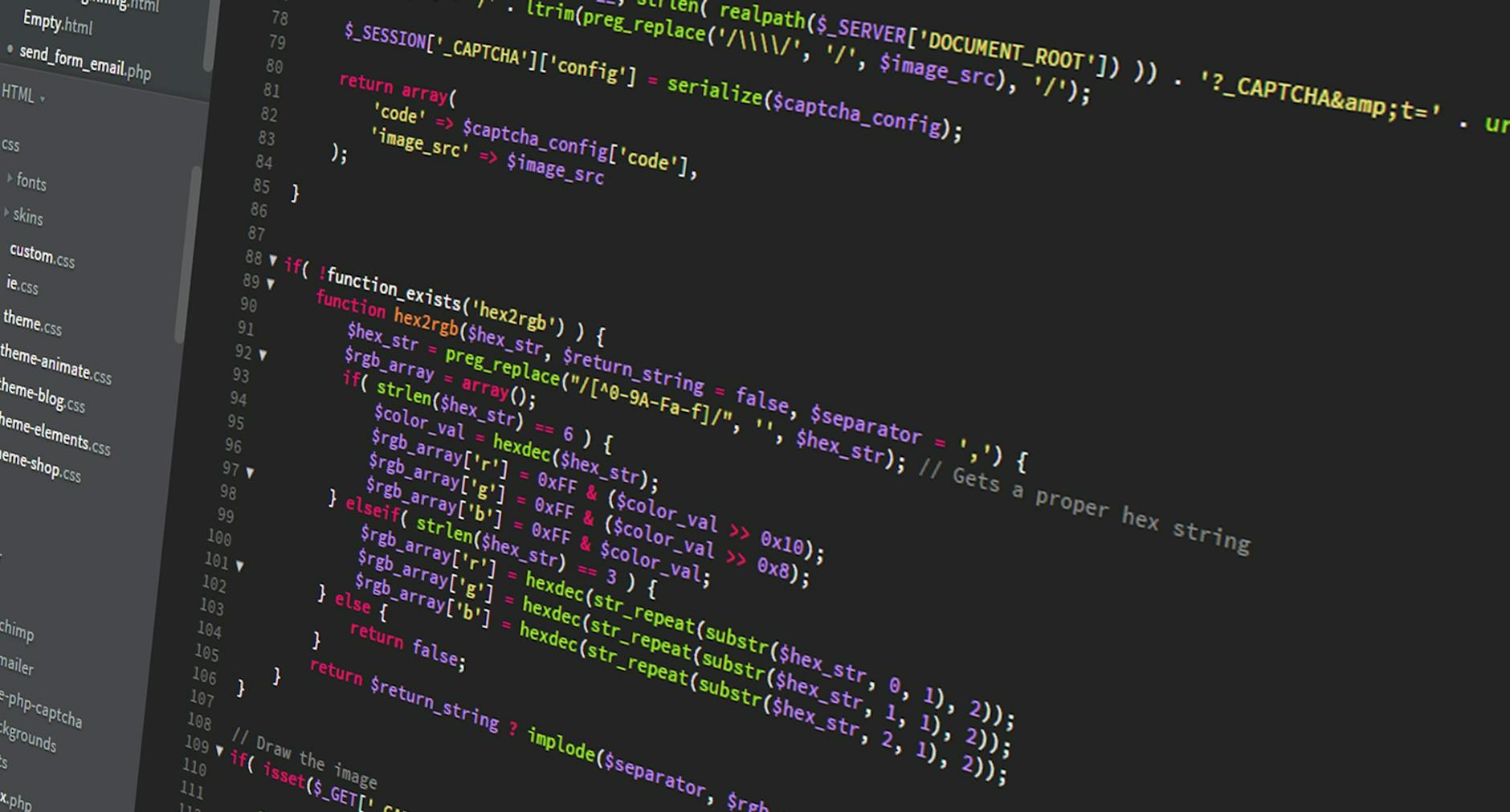Showdown: Python vs Java Performance Comparison
Comparison Factors
In the smackdown between Python and Java performance, you gotta look at a bunch of details. Two biggies are memory handling and their street cred (popularity and gig demand).
Memory Efficiency
When you pit these two coding heavyweights against each other, memory power is a biggie. Python and Java got their own ways to tackle memory due to their different personalities.
Python’s that chill, go-with-the-flow type, letting its variables swap types whenever. Cool, right? But here’s the catch—it sometimes needs extra backup when it comes to memory. Because Python’s all about being dynamic, more memory is eaten up for storing stuff like data types and what-have-you. So yeah, it’s a bit of a leech on the memory side of things (Medium).
Java, though, is like your nerdy friend who’s got everything in neat folders. It’s static, sticks to its guns, and plays the memory game more efficiently. Java’s got some primo garbage collectors tidying up after it and that fancy JIT trick up its sleeve so that it doesn’t hog memory, unlike its Python pal (Medium).
| Language | Memory Efficiency |
|---|---|
| Python | Hungrier due to its easy-going nature |
| Java | Leaner with a knack for tidying up |
For all the nerdy deets on memory management, hop over to our bit on programming language comparison.
Popularity and Demand
How much a language is loved and needed can steer newbies towards it. Python and Java have both been hogging the limelight in the dev playground for years now.
Python’s snagged a lot of fans lately ‘cause it’s easy-peasy and doesn’t give ya a headache to read. You’ll find it in the usual haunts: web design, crunching numbers, AI, nerdy science stuff, and even running repetitive tasks while you nap. It’s got more libraries than your local library, awesome backup from fellow Pythonistas, and it’s a cinch to pick up, making it a hot-ticket item among coders. Check out our roundup of the most popular programming languages—Python often scores top marks, even nudging Java aside in some reckonings.
Java, while always popular, rules the big leagues. It’s strong, independent, and plays well anywhere you got big apps needing top performance. Java’s the go-to for servers, mobile apps (hello, Android), and enterprise-level projects, keeping steady on the job front.
| Language | Areas of Use | Popularity & Demand |
|---|---|---|
| Python | Web, AI, Number-crunching, Lazy tasks | Zooming ahead, major player |
| Java | Big Business, Mobile, Behind-the-scenes | Solid as a rock, always a need |
If you’re scratching your head about where to start, our tips on which programming language should I learn first won’t steer you wrong.
Getting the skinny on these factors can clear the fog when picking a language, balancing what your projects need and where your career’s headed. Each language shines in its own spot and rocks in different scenarios and industries, sticking with the best practices out there in the coding universe.
Performance Analysis
Everybody’s talking about Python and Java—especially young programmers trying to decide which horse to bet on. Both have their die-hard fans, but let’s cut through the noise and really check out what each one brings to the table… speed-wise, feature-wise, and just plain wise.
Speed and Execution
Alright, let’s not kid ourselves: when it comes to speed, Java’s got a little pep in its step. Java zips past Python especially when performance is the mantra. Thanks to its good ol’ Just-In-Time (JIT) compiler, Java makes quick work of just about any task you throw its way. The JIT does some sweet magic with bytecode, flipping it into machine language right when it’s needed. This gives Java a serious edge over Python, which plays in the slower lane of interpreted languages.
Now, Python has its charms but she ain’t built for speed. Want to know why? Well, Python uses an interpreter, not a compiler, and then there’s dynamic typing and everybody’s favorite roadblock, the Global Interpreter Lock (GIL). These things are like speed bumps that slow Python down while Java speeds off into the horizon.
| Performance Issue | Java | Python |
|---|---|---|
| Compilation Process | Compiled with JIT | Interpreted |
| Typing Style | Static | Dynamic |
| Speed | Fast | Sluggish |
| Binary Tree Test | 10x faster (Java) | Slowpoke (Python) (Raygun) |
Language Features
Both Java and Python have their own swagger, boasting features that can really make or break their job prospects depending on what you need.
Java’s Highlights:
- Compiled Language – Both polish and speed boost at compile time, getting everything ready for prime time.
- Just-In-Time (JIT) Compiler – Whips up some bytecode right before the show starts, cranking up runtime efficiency.
- Static Typing – Run-time gets a pass on type checks, leading to faster execution when the rubber meets the road.
Python’s Strong Suits:
- Interpreted Language – Offers a laid-back, flexible style but falls a bit short when trying to keep pace.
- Dynamic Typing – Makes for easy living but asks run-time to check those types, which can slow things down.
- Global Interpreter Lock (GIL) – Can be like a pothole for multi-threaded programs, causing a jolt in performance.
Want to peek at the bigger picture and see how these nuances play out? Check our chats on programming language comparison and best practices in software development.
Java wears the crown for keeping things fast and steady, making it a go-to for hefty apps that need speed and muscle (SnapLogic). Then there’s Python: it’s the jack-of-all-trades, super flexible and perfect for whipping up scripts in a jiffy—but it won’t win a footrace.
Thinking of diving deeper? Whether you’re figuring out which programming language should I learn first or just curious about most popular programming languages, there’s a guide ready to help you decide.
Use Cases and Preferences
Getting a grip on what makes Python and Java shine can help young coders make smart choices. Let’s break it down into simple bites and see where each language really scores.
Python Strengths
Python’s best-known for its user-friendly vibe. If you’re new to coding land, it’s a great map to start with. Let’s check out where Python really delivers:
-
Ease of Learning: Python’s got a friendly syntax that doesn’t twist your brain into knots, making it perfect for beginners.
-
Versatility: From crafting the future with AI and machine learning to building the backbone of websites, Python’s like a Swiss Army knife for tech (DataCamp).
-
Development Speed: Speeding up coding sprints is Python’s thing, thanks to its easy syntax and dynamic style. This is a real score for startups and research labs needing quick turnarounds (SnapLogic).
-
Community and Libraries: With a buzzing community, Python offers loads of libraries to make coding smoother and solve hiccups easily.
Java Strengths
Though Java’s a deeper dive, it’s prized for its power and toughness. Perfect for building big stuff. Here’s where Java flexes:
-
Performance: Java’s like the sports car of programming languages—fast and efficient, ideal for big scales. Its static approach and compiling give it that extra zip (SnapLogic).
-
Enterprise-Level Applications: For the big guns in banking or finance, Java’s the strong, silent type handling backend tasks with ease (DataCamp).
-
Security: Java’s got your back with solid security features, perfect for projects that need some serious security mojo.
-
Object-Oriented Programming (OOP): By sticking to OOP, Java helps build neat, clean, and efficient code piles—great for wrangling complex programs (Imaginary Cloud).
| Strengths | Python | Java |
|---|---|---|
| Learning Curve | Easy Peasy | More of a Climb |
| Development Speed | Zippy Prototypes | Sturdy, but Slower |
| Common Use Cases | AI, Science, Web | Big Biz, Backend |
| Performance | Decent | Top-Notch |
| Syntax | Simple, Clear | More Rigorous |
| Security | Good Enough | Rock Solid |
Want to dive deeper into which language works best for different projects? Check out our programming language comparison and see which programming language should i learn first. Figuring out the strengths of Python and Java will guide you towards the perfect tool for your next project adventure.
Learning Curve
Beginner Friendliness
When eyeballing the learning curve for coding rookies, Python and Java each have their unique mile markers. Python gets the nod for being user-friendly, thanks to its no-frill syntax that’s easy on the eyes. This simplicity is a big win for newbies, letting them catch onto programming concepts like a duck to water and see results quick, boosting their programming mojo.
Java, on the flip side, throws rookies straight into the deep end with strict syntax rules and the whole shebang of Object-Oriented Programming (OOP) from day one. This can make the intro class a bit rough around the edges but lays the groundwork for a rock-solid understanding of programming basics, which pays off big time later on (DataCamp).
| Language | Ease of Learning | Key Features Impacting Learning Curve |
|---|---|---|
| Python | Higher | Simple syntax, dynamic typing, fast results |
| Java | Lower | Rigid syntax, static typing, OOP grounding |
For more details on picking the right language to kick off your coding trip, take a peek at our handy guide on which programming language should I learn first.
Syntax and Readability
Python’s a champ when it comes to readable, easy-to-grok code. Its syntax is as clear as day, often getting props for looking like plain English. This clarity stems from using indentation instead of curly brackets or those pesky semicolons, making it easier for greenhorns to pick up the pen and start writing their first lines of code (Imaginary Cloud).
Java, meanwhile, opts for a more old-school approach with braces {} and semicolons ;, which might seem clunky at first glance. But this old guard syntax has its perks, nudging coders towards structured, mistake-proof code. Plus, Java’s love for static typing catches type bloopers before they mess with your runtime, a handy shield for those tackling bigger, hairier projects.
| Feature | Python | Java |
|---|---|---|
| Code Structure | Indentation | Braces and semicolons |
| Typing | Dynamic | Static |
| Readability | High | Moderate |
If you crave more insight into Python and Java’s silhouettes, pop over to our programming language comparison page.
Both languages have got their groove when it comes to syntax and readability, each ticking different boxes for different folks. A handle on these quirks can aid budding coders in deciding which path matches their learning vibe and project aims. To delve into more about coding best practices, slide on over to our article on best practices in software development.
Cross-Platform Capabilities
When we talk about the ability of Python and Java to work across various systems, it’s all about how they fit into different environments and how they manage to get your code up and running wherever you need it. This has a big impact on how fast, smooth, and easy it is to get things done.
Platform Compatibility
Python and Java are superstars when it comes to being multi-system friendly. You can pretty much take the programs written in these languages to different operating systems without needing to tweak a thing. But how they do this magic trick is a little different for each.
| Factor | Python | Java |
|---|---|---|
| Platform | Just works everywhere | Works everywhere too |
| Standard Libraries | Loads of them | Loads of them |
| WORA (Write Once, Run Anywhere) | Not all the way | Totally |
| Development Environments | Flexible | More Fixed |
Python uses its interpreter to make your code talk to the machine right when it’s needed, which is great for getting going on lots of projects but might slow things down if you’re trying to push performance to the max.
Java’s big thing is the Java Virtual Machine (JVM), which takes the code, turns it into a middle ground called bytecode, and then makes it work on the JVM anyplace you want it. This makes Java a solid choice for big, serious business apps.
If you want to dive deeper into how to pick a language based on how well it works across different systems, check out our programming language comparison.
Compilation Process
How a language packs things up and gets it ready to go is a big deal for how slick and speedy it runs. Python and Java have their own ways of doing this:
| Factor | Python | Java |
|---|---|---|
| Compilation Type | Reads code on the fly | Prepares code ahead |
| Compilation Time | While it runs | Before it runs |
| Performance Booster | Zip | Just-In-Time (JIT) magic |
| Flexibility | Big Time | Somewhat less |
Python reads each line while it runs, letting you do lots of cool stuff like changing types on the go and catching syntax slip-ups right there and then, though it might mean trading speed for ease of use. This makes Python a go-to for quick mock-ups and testing stuff out.
Java, with its JIT compiler, turns that bytecode into machine-ready instructions just in time, giving a big boost to how quickly it runs (SnapLogic). Its firm structure and focus on objects make it a champ for jobs that need precision and swiftness.
For newbies and old hands looking at how to pick the right way to get their code ready, our articles on best practices in software development and which programming language should I learn first are packed with tips.
Understanding how Python and Java handle these tasks can be a big help for anyone trying to figure out which one to pick based on where they want to use it and how it gets ready to roll.
Application and Industry Usage
Python Applications
Python is a jack-of-all-trades in the tech world, beloved for its flexibility and user-friendliness. It’s a go-to for wizards in artificial intelligence, machine learning, and scientific number-crunching. Imagine conjuring up complex models or taming data with ease using tools like TensorFlow or Pandas (Imaginary Cloud).
The magic of Python doesn’t stop there. It’s a favorite for web development, too. Tools like Django and Flask make crafting the backend as smooth as spreadin’ butter. And let’s not forget data science where it shines with its powerful data-slinging libraries and making numbers dance with visuals using Matplotlib and Seaborn (DataCamp).
| Python’s Hangout Spots | Star Tools |
|---|---|
| Artificial Intelligence | TensorFlow, Keras |
| Machine Learning | Scikit-Learn, PyTorch |
| Scientific Computing | SciPy, NumPy |
| Data Science | Pandas, Dask |
| Web Development | Django, Flask |
| Data Visualization | Matplotlib, Seaborn |
Got an appetite for more Python magic? Sneak a peek at our deep dive on most popular programming languages.
Java Applications
Java swings a mighty bat with its sturdy and safe game, making it a superstar in heavyweight enterprise gigs. If you’re in finance or banking, Java’s your trusted sidekick for twisting up solid backend systems. But don’t box Java in—it’s stretching its muscles in web jungles, enterprise puzzles, and even in pint-sized embedded systems (DataCamp).
Java’s no stranger to crafting snazzy desktop apps, handling asynchronous hocus-pocus, and serving up web application magic. Its ride-or-die, the Java Virtual Machine (JVM), lets it romp across platforms without skipping a beat.
| Java’s Scene | Cool Gadgets |
|---|---|
| Enterprise Solutions | Spring, Hibernate |
| Finance and Banking Systems | Java EE, Apache Camel |
| Web Development | Spring MVC, Struts |
| Desktop GUI Applications | JavaFX, Swing |
| Embedded Systems | Java ME |
| Web Application Services | Jakarta EE, Apache Tomcat |
Need a roadmap to Java’s aces? Take a glance at our savvy look on programming language comparison.
Python and Java both pack a punch, each strutting their stuff in unique dance floors. Picking one or the other often boils down to the nitty-gritty needs of the project and what the big shots demand. Greenhorn coders, take note—knowing where these powerhouses thrive helps you choose which one to make your ride or die. For a little more wisdom on the first steps of your coding journey, check out our guide on which programming language should I learn first.
Development Considerations
When you’re trying to pick between Python and Java, how they affect your work speed and the length of your code are big deals. By checking out these factors, newbies can figure out which one might be their jam.
Development Speed
Python keeps things chill with its easy-to-grasp syntax, making it a go-to for fast coding and quick trial runs. This is a big part of why everyone’s hunting for Python whizzes, with a demand spike of 41% everywhere.
Why Python’s Fast on the Draw:
- Quick to test ideas
- Friendly for beginners
- Get the job done faster
Meanwhile, Java’s got a rep for being rock-solid and perfect for big business projects. It might need more time due to its strict grammar and rules, but the result? Super stable heavy-duty programs (Imaginary Cloud).
Why Java’s Worth the Wait:
- Strong and stable output
- Best for big-scale projects
- Runs like a champ
Curious about what’s popular? Check the most popular programming languages.
Code Volume
The language you choose also changes how much code you’ll be writing. With Python, you get to say more in fewer words, making life a bit easier and speedier.
Why Less is More with Python:
- Clean and clear
- No extra fluff
- Gets done quickly
Java, in contrast, asks for a bit more chatter to pull off the same tricks. This can lead to hefty code piles, needing more hands on deck to keep things from falling apart (Imaginary Cloud).
| Language | Average Code Volume for Similar Tasks | Development Speed |
|---|---|---|
| Python | Low | High |
| Java | High | Moderate |
Data from SnapLogic
The extra lines in Java’s code help with catching slip-ups and ensuring everything checks out, making for super dependable apps.
Why More Can Be Better with Java:
- Catch more errors
- Checks types like a pro
- Bigger code teams required
Need tips on coding? Head over to best practices in software development.
Deciding between Python and Java depends on what your project needs and what feels right for you. If you like things fast and straightforward, Python’s your pal. But if you’re building something big with loads of users, Java’s your guy (SnapLogic).
For a full scoop on which language to pick, browse our programming language comparison for more advice.
Final Decision Factors
Project Requirements
Choosing between Python and Java for your project isn’t a simple flip of a coin. You’ve got different goals and needs to weigh. Java comes out swinging with its solid speed, the ability to run almost anywhere, and some nifty tricks for handling lots of tasks at once. If you’re building something big like a bustling online store or a bank app, Java’s ability to stay cool under pressure will keep everything running smoothly.
Let’s talk specifics:
- Performance: Java’s like a speedy hare, perfect when quickness counts.
- Scalability: Java’s multitasking skills make it ready for the big leagues.
- Security: With a fortress of security features, Java’s perfect for applications that need to keep things tight and safe, like banks.
Think about these aspects based on what you’re building. There’s more to discover in our programming language comparison guide.
Personal Preferences
Your vibe with a language matters, too. Are you a Python fan because it’s easy-going and friendly for those just dipping their toes in? Its simple syntax is like a welcoming handshake, making it a breeze for newcomers to get started. Python lets you whip up projects quickly, which is great for throwing ideas around and trying things out.
Here’s what to consider:
- Ease of Learning: Python talks in plain language, making it easier for new folks to pick up the gears of coding.
- Development Speed: Thanks to its compact code style and vast libraries, Python lets you build at a brisk pace.
- Syntax Enforcement: Java demands a little more attention to detail with its syntax, grounded in Object-Oriented Programming (OOP). It might take a bit more learning, but it sets a firm base for sound software design.
Both Python and Java have their own kinds of magic, and picking one boils down to what you’re comfy with and what the project demands. If you’re wondering which language to learn next, check out our thorough guide on which programming language should I learn first.
Here’s a snapshot of the key players:
| Factor | Python | Java |
|---|---|---|
| Ease of Learning | Friendly and straightforward syntax | More rigid syntax, slightly tougher to master |
| Performance | Not the fastest horse in the race | Quick and reliable for heavy-duty tasks |
| Scalability | Great for less demanding jobs | Made for scaling up to industrial-strength applications |
| Development Speed | Zip through dev cycles | Slower due to OOP thoroughness |
| Security | Not as many built-in guards | Got a whole lot of security smarts |
Python and Java each shine in the programming universe, and your pick should echo what you, your project, and your dreams need. Dive into more on these ideas in our segment on best practices in software development.













